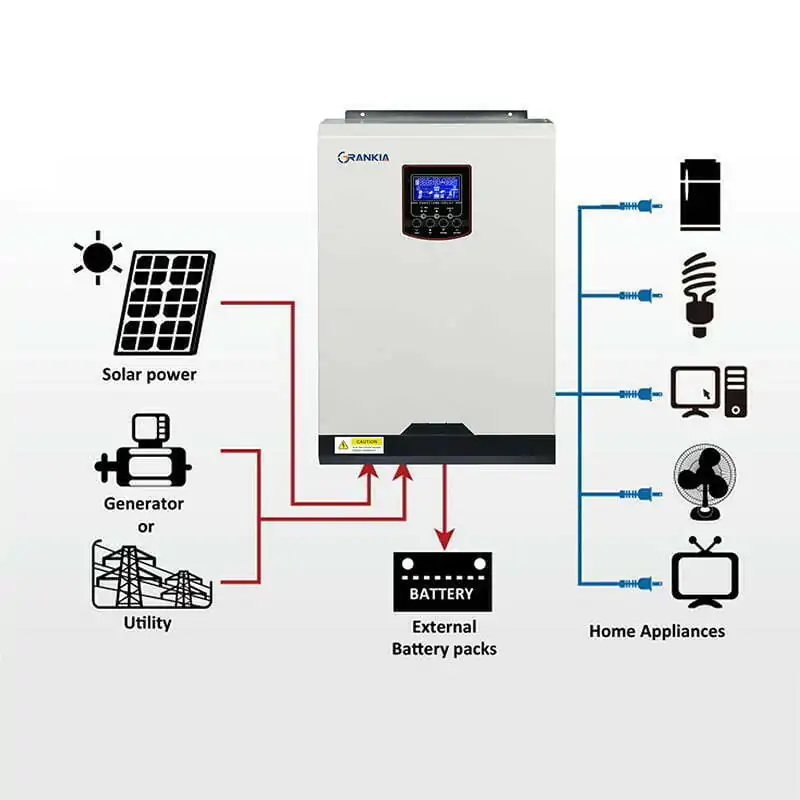In today’s world, power cuts are common in many areas, making inverters an essential part of every household. An inverter helps provide backup power during outages, ensuring that your essential appliances keep running. But choosing the right inverter can be confusing due to the various types, capacities, and features available.
In this guide, we will help you understand how to choose the best inverter for your home in simple terms.
What is an Inverter?
An inverter is a device that converts DC (Direct Current) power from a battery into AC (Alternating Current) power, which is used to run household appliances. When there is a power outage, the inverter provides electricity to keep your lights, fans, and other devices running smoothly.
Factors to Consider When Choosing an Inverter

1. Determine Your Power Requirement
Before buying an inverter, you need to calculate how much power your home appliances consume. Follow these steps:
- Make a list of appliances you want to run on the inverter (lights, fans, TV, refrigerator, etc.).
- Check their power consumption (wattage).
- Add up the total wattage.
For example, if you want to run:
- 2 Fans (75W each) = 150W
- 3 LED Lights (10W each) = 30W
- 1 Television (100W) = 100W
- 1 Laptop (60W) = 60W
Total Power Requirement = 340W
2. Choose the Right Inverter Capacity (VA Rating)
Inverters are rated in VA (Volt-Ampere). To choose the right VA rating, use this formula:
VA = Total Power Requirement (Watts) ÷ Power Factor (Efficiency of the inverter, usually 0.8)
For example:
VA = 340W ÷ 0.8 = 425VA
So, you need an inverter with a minimum of 425VA. Since inverters come in standard sizes like 500VA, 800VA, 1000VA, etc., you should choose the next available size, which is 500VA.
3. Select the Right Battery Capacity
The battery is the heart of an inverter system. Battery capacity is measured in Ah (Ampere-hour). To calculate battery capacity, use this formula:
Battery Capacity (Ah) = (Total Load × Backup Hours) ÷ Battery Voltage
If you want 3 hours of backup for a 340W load:
Battery Capacity = (340W × 3 hours) ÷ 12V
= 85Ah
Since batteries come in standard sizes like 100Ah, 150Ah, 200Ah, etc., you should choose 100Ah or higher for better backup.
4. Types of Inverters: Which One is Best?
There are three main types of inverters:
A. Pure Sine Wave Inverter
- Provides smooth and stable electricity.
- Best for sensitive appliances like refrigerators, microwaves, and computers.
- More expensive but highly efficient.
B. Modified Sine Wave Inverter
- Works well for basic appliances like fans and lights.
- Less expensive but may not be suitable for heavy-duty electronics.
C. Square Wave Inverter
- Least efficient and not recommended for home use.
- Only suitable for very basic appliances like bulbs and fans.
👉 Recommendation: Choose a Pure Sine Wave Inverter for better performance and longevity of appliances.
5. Battery Type: Lead-Acid vs. Lithium-Ion
The battery you choose affects the efficiency and lifespan of your inverter system.
A. Lead-Acid Battery
✅ Affordable
✅ Widely available
❌ Requires regular maintenance
❌ Shorter lifespan (3-5 years)
B. Lithium-Ion Battery
✅ Long lifespan (8-10 years)
✅ Maintenance-free
✅ Faster charging
❌ Expensive
👉 Recommendation: If budget is not an issue, choose Lithium-Ion Batteries for better performance and durability.
6. Additional Features to Consider
When buying an inverter, look for these useful features:
✅ LCD Display – Shows battery status, load percentage, and backup time.
✅ Overload Protection – Prevents damage if the load exceeds the inverter’s capacity.
✅ Fast Charging – Helps charge the battery quickly when power is restored.
✅ Solar Compatibility – Some inverters support solar panels, making them energy-efficient.
Best Inverter Brands in India
Here are some of the top inverter brands to consider:
🔹 Luminous – High-quality inverters with good battery life.
🔹 Microtek – Budget-friendly and reliable.
🔹 Exide – Known for durable batteries.
🔹 Sukam – Offers efficient pure sine wave inverters.
🔹 V-Guard – Great performance and excellent customer support.
Installation and Maintenance Tips
- Proper Ventilation: Keep the inverter in a well-ventilated area to avoid overheating.
- Battery Maintenance: Check water levels regularly (for lead-acid batteries).
- Load Management: Avoid connecting high-power appliances like ACs and geysers to the inverter.
- Regular Servicing: Clean battery terminals and ensure proper wiring to prevent power loss.
Conclusion
Choosing the right inverter for your home depends on your power requirements, battery capacity, and inverter type. Here’s a quick summary:
✅ Calculate your total power requirement.
✅ Choose the right VA rating (500VA, 800VA, etc.).
✅ Select a battery with sufficient capacity (100Ah, 150Ah, etc.).
✅ Go for a Pure Sine Wave Inverter for better efficiency.
✅ Prefer Lithium-Ion Batteries for long life (if budget allows).
✅ Pick a reliable brand like Luminous, Microtek, or Exide.
By following these steps, you can easily choose the best inverter for your home and enjoy uninterrupted power during outages.

